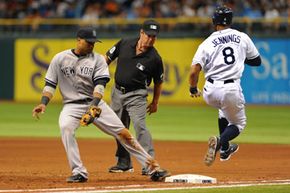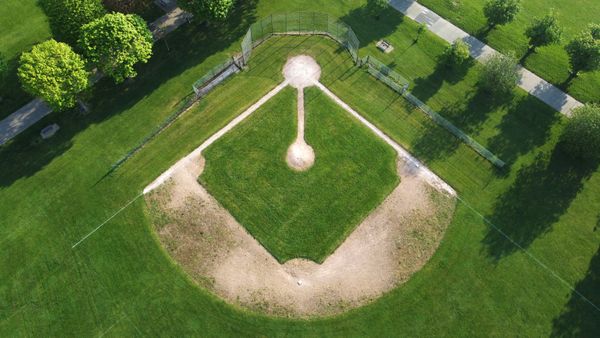You're up to bat. The pitcher winds up and slings the ball toward the plate. With a well-timed swing, you send a grounder hurtling through the infield grass to the shortstop. As he dives to intercept the ball, you worry that his throw to first base may beat you there and the umpire will call you out. Luckily, you don't have to slow down and stop at the base. The rules of baseball allow the batter, with certain restrictions, to run past first base without having to worry about being tagged out.
In case you want to look it up, the regulation that allows batters to overrun first base is found in Major League Baseball's "Official Baseball Rules" under section 7.08(c). This statute basically says that a runner is out when he is tagged off of a base, except when he overruns or overslides first base and then immediately returns to it (more about that last part in a bit). So after hitting the ball, a batter can run full steam until he steps on first base, then continue past it, staying right of the foul line while he slows down, turns and walks back to the bag.
Advertisement
But why would you, as the batter, want to overrun first? As the above example illustrates, running past the base allows you to get there faster, decreasing the chance that you'll be thrown out if the play is close. Batters usually use this tactic when they hit a ground ball to the infield; doing it if you pop the ball up in the air or hit it to the outfield doesn't really make sense because there isn't likely to be a play at first base. Plus, if you hit a ball to the outfield, it's usually best to hang a left at first base in case you can keep running to second.
While overrunning first base can help you beat the fielder's throw, you can still be called out in certain situations. Remember that part of the rule that says the runner has to return to the bag immediately after running past it? Turns out, that's a pretty important step to remember. After overrunning first base, you can still turn and go to second, but beware: Once you've made that move, you can be tagged out since you didn't immediately go back to the bag. If you head to the dugout or to your defensive position after running past first, mistakenly thinking that the inning is over, a fielder can tag you out or force you out simply by touching the base. The same rules apply when the umpire advances the batter to first by calling a ball or walk, though it's not common to overrun first in these situations.
Finally, remember that first is the only base you can overrun (other than home). Don't cross second or third unless you can return or make it to the following base; otherwise, the next place you'll be heading is the dugout after you're tagged out!
Advertisement


